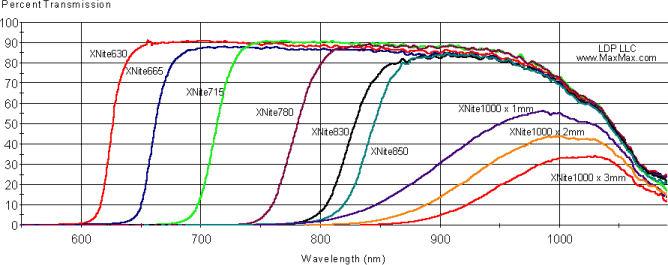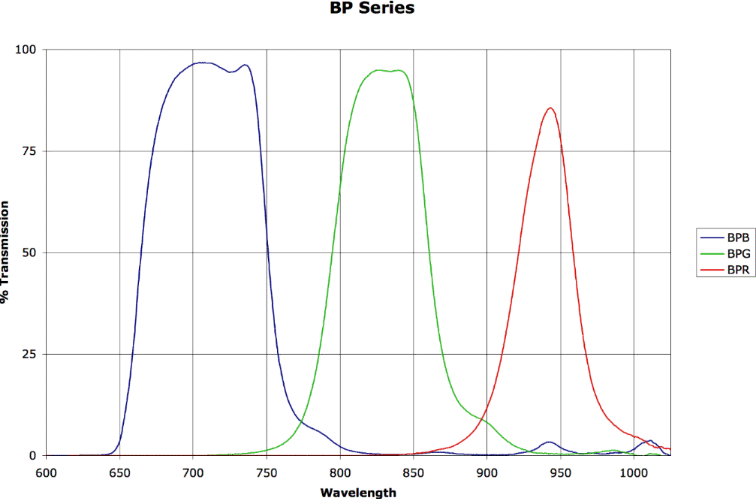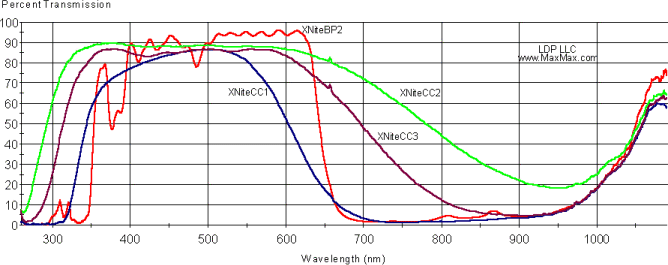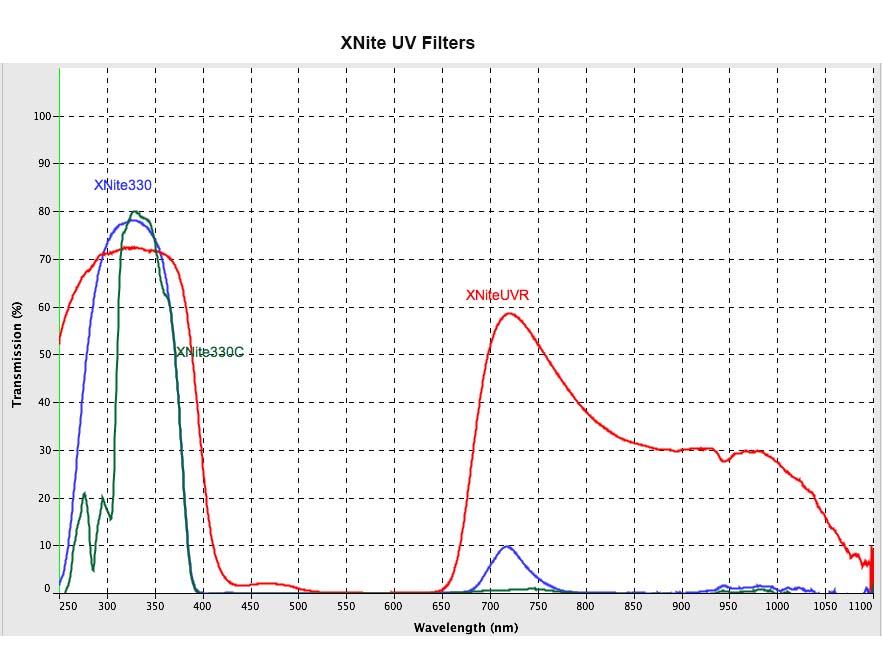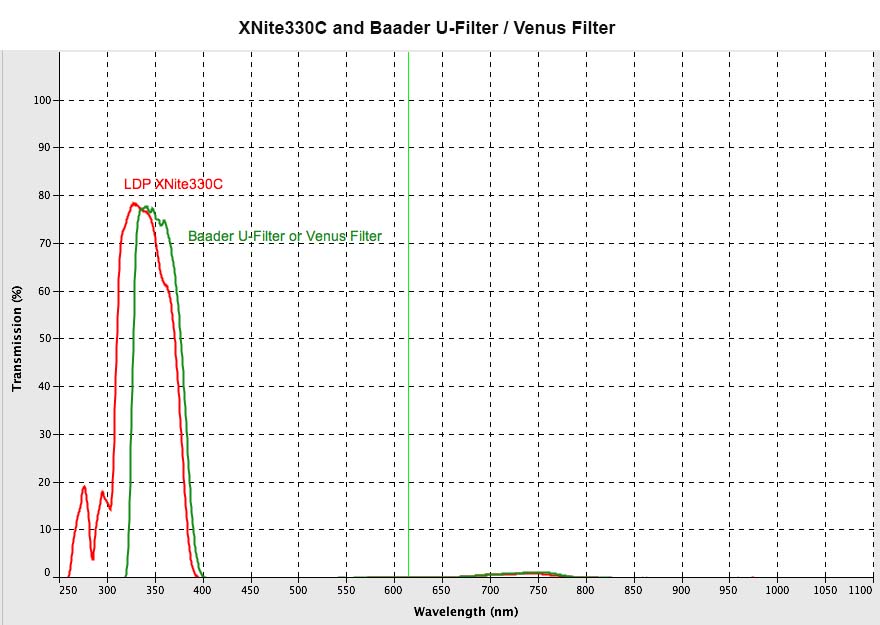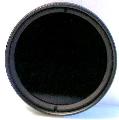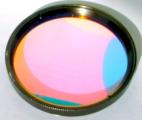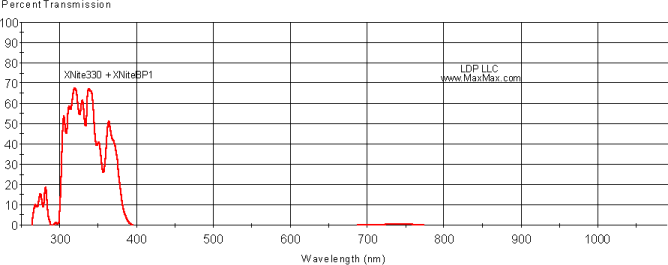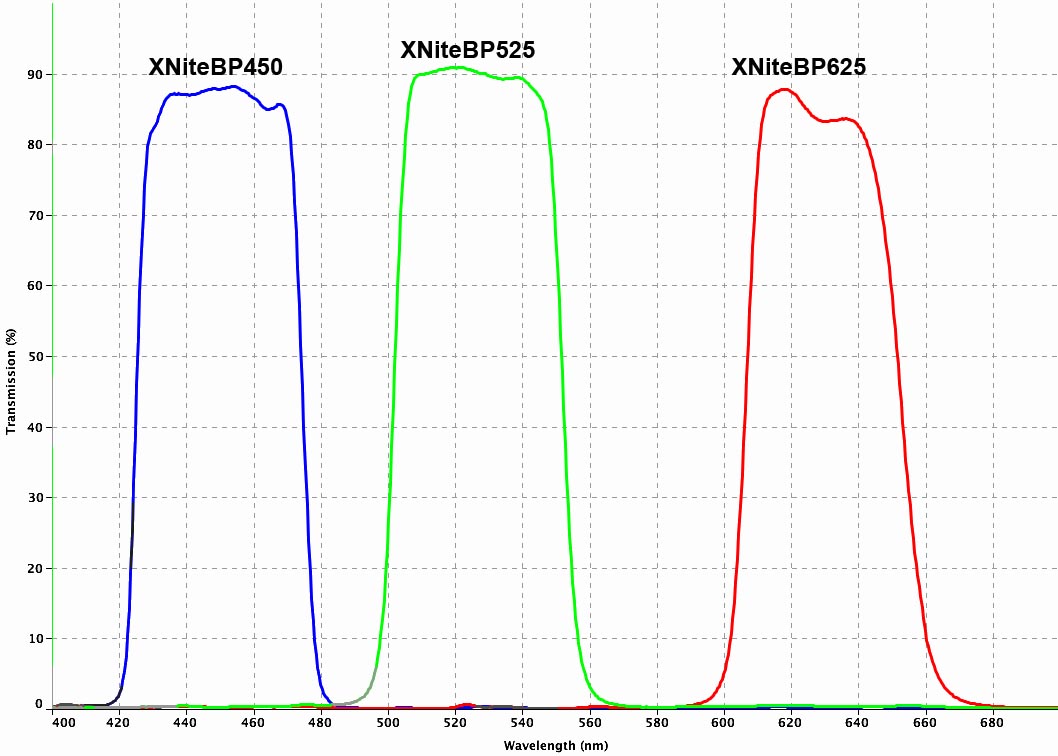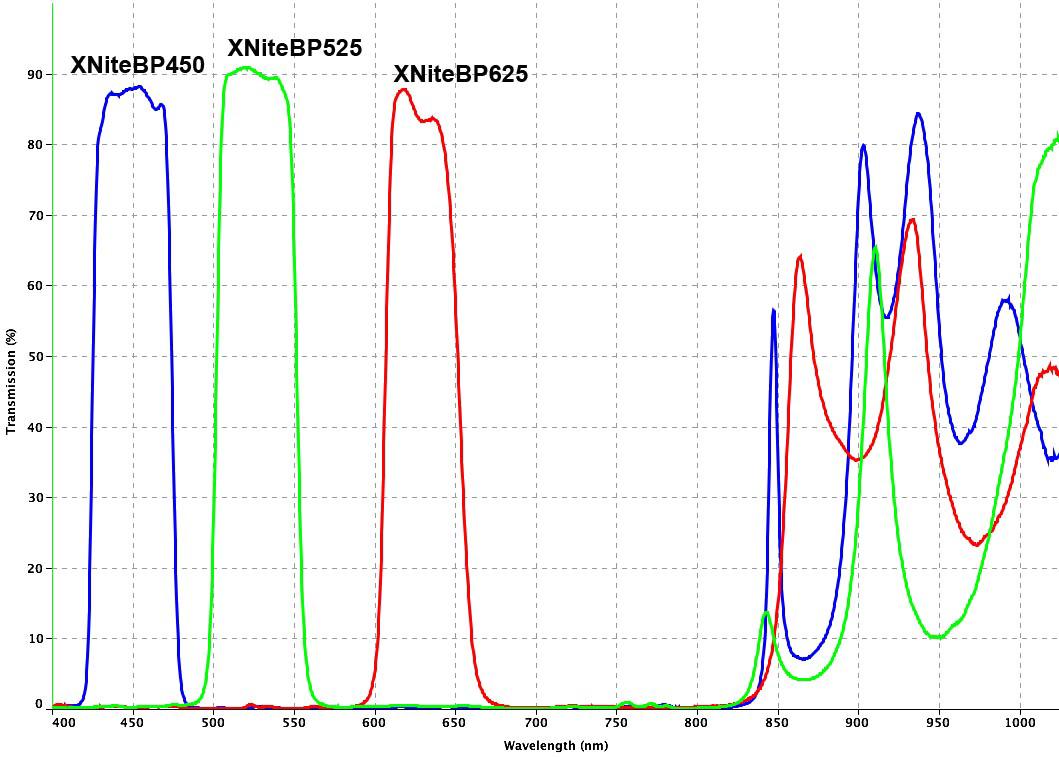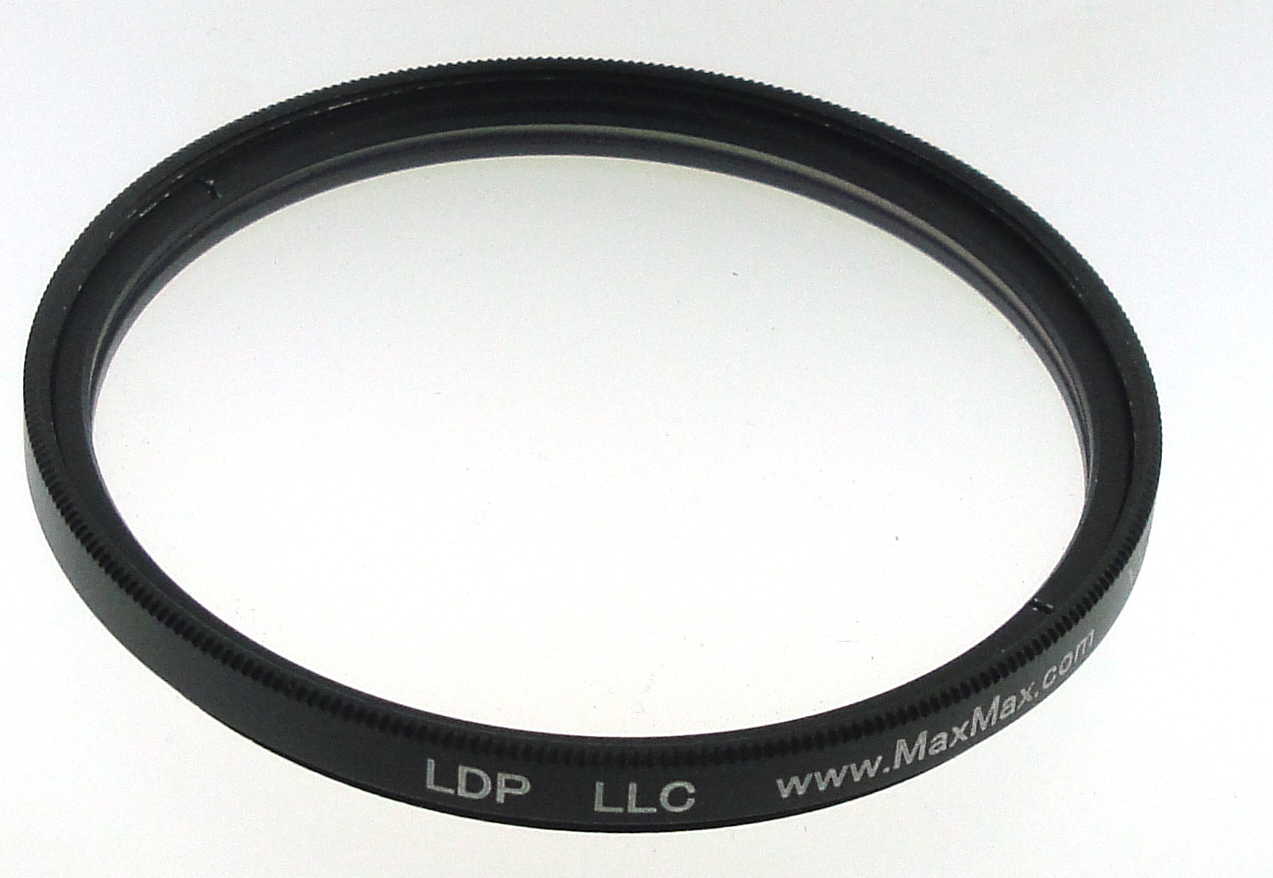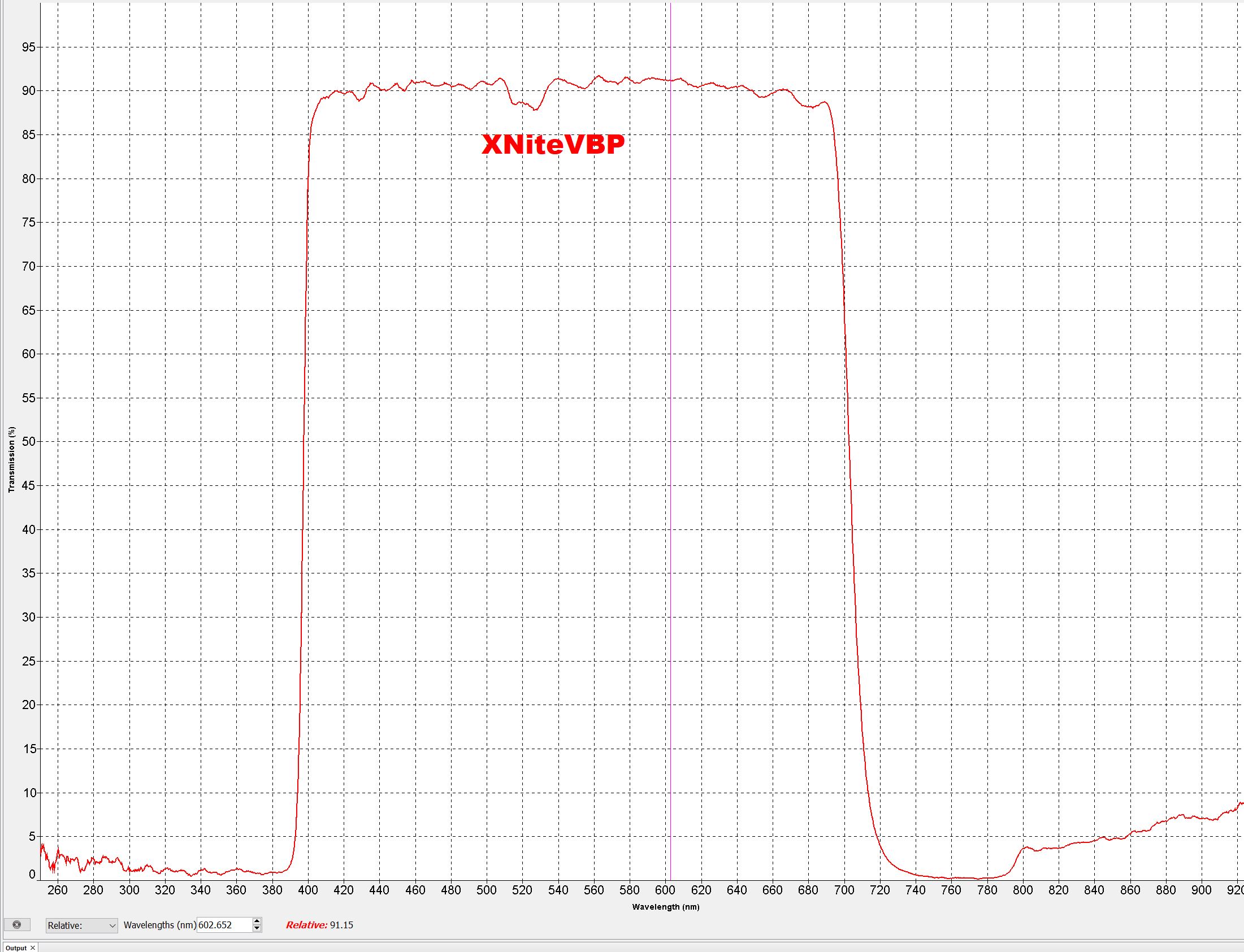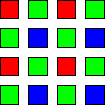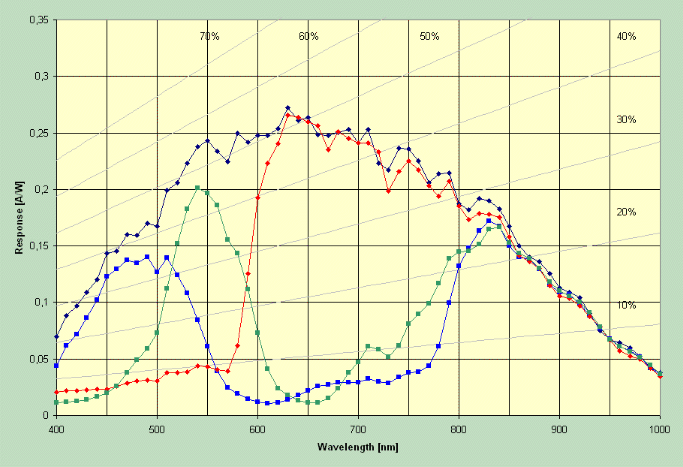Technical
To go directly to the Filter section of our store, please click here.
|
X-Nite Filters are precision made, quality filters. Listed are various specifications. Our greatest selection of filter types is in 58mm. Infrared Filters (Infrared Pass / Visual Light Blocking)
Infrared Color Band Pass Series
Infrared Blocking / Visual Light Pass Filter
Ultraviolet Pass / Visual Light Blocking Filter
330nm Filter Bandpass BP1 Filter
XNite330 versus XNiteBP1 Transmssion
XNite330 + BP1 Filter Stacked Together Transmisson
Visual Color Bandpass Series XNiteBP450, XNiteBP525 and XNiteBP625 are visible bandpass filters with the center frequencies located at the center of the same frequencies as a digital camera's RGB sensor. However, unlike the camera's RGB response, these filter do not leak into each other in the viisble spectrum.
The XNiteBP450, XNiteBP525 and XNiteBP625 do open in the infrared spectrum above 825nm. Because of this, if you will be using a camera that sees both visible and infrared light simultaneously, you also use a CC1 filter to block the infrared. If you are using a stock camera, the infrared frequencies will be blocked by the camera's internal IR Cut Filter.a
XNiteVBP - XNite Visual Band Pass Filter.
Water clear to the eye. Passes 400-700nm. Sharp UV cut at 400nm Sharp IR cut at 700nm
CCD and CMOS image sensors only see black and white. In order for the camera to see color, small color filters are printed on top of the image sensors. These filters are typically arranged in a Bayer pattern.
Below is the typical response curve for CCD and CMOS image sensors. The top dark blue channel shows the quantum efficiency of an unfiltered image sensor. The Red, Green and Blue traces show the transmission response after the light passes through the mosaic color filter over the image sensors.
Other Glass Equivalents: Kaya PF4 is 780nm Hoya RM72 is 720nm M&K #093 is 830nm M&K #095 is 850nm M&K 1000 is 1000nm Wratten 18A is 350nm Heliopan filters use Schott glass indicated by the RG number. For example, RG830 = 830nm and RG1000=1000nm. |
